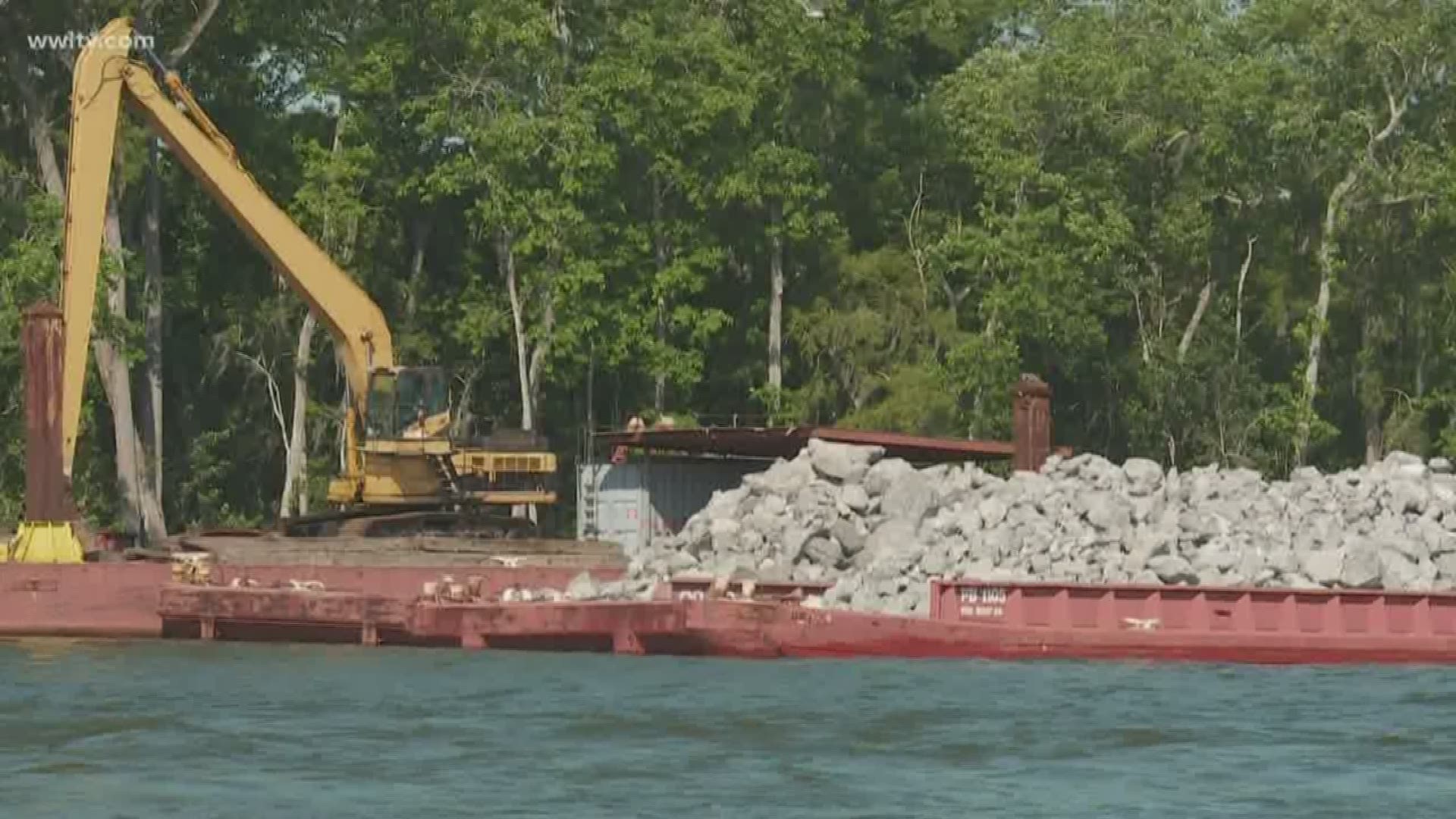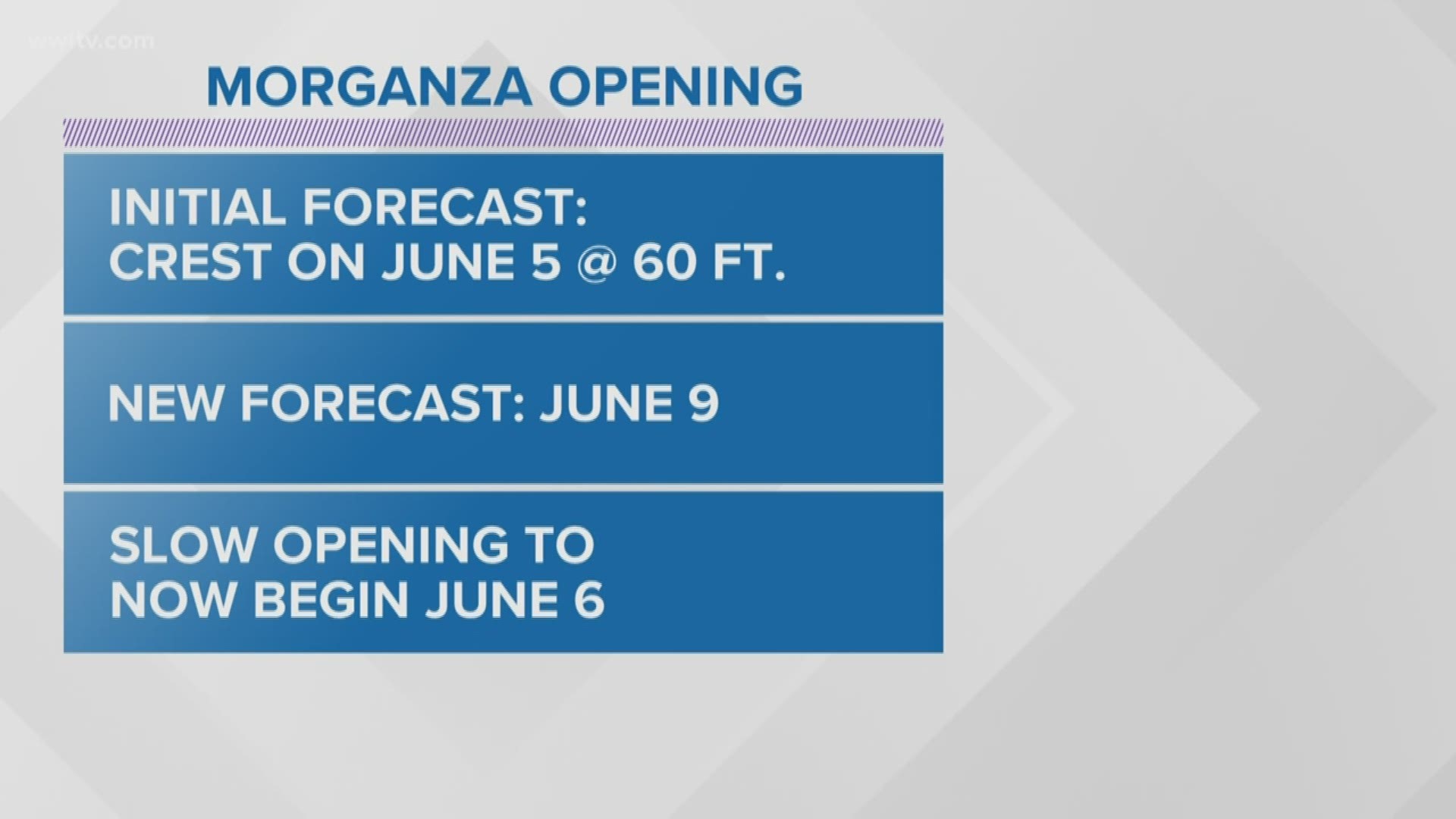BAYOU CHENE, La. — With the delay of the opening of the Morganza Spillway, the installation of the temporary floodgate at Bayou Chene is expected to be completed long before additional water from the Mississippi River flows down the Atchafalaya.
Governor John Bel Edwards held a news conference on top of the sunken barge on Thursday evening, stating the delayed opening will allow the water to drop more before the water from the Mississippi reaches the Morgan City area. If the Morganza Spillway opens, he said about 10 feet of water would reach Morgan City around June 21.
“We’re in a much better place today than we were a couple days ago,” he said.
The U.S. Army Corps of Engineers announced late this afternoon that the spillway opening is being delayed from Sunday to next Thursday.
The temporary floodgate is expected to cost the state $7.4 million. President Donald Trump signed a federal declaration of emergency that will allow the state and about a dozen parishes to be reimbursed for up to 75 percent for flood-protection efforts on Wednesday.
Terrebonne Parish President Gordy Dove, who toured the barge and the sandbagging in the Tabor Canal earlier in the day, said the parish plans to continue pumping nearly 500,000 gallons of water per day for as long as necessary and called the delay “great news.”
“We’re going to continue pumping 24/7 to get more water out of the basin,” he said.
Residents in the Gibson and Bayou Black areas who have seen flooding for the past few months should start to see their water levels decrease.
Currently, workers on the 400-foot-long, 100-foot-wide barge are driving sheet pilings into the ground in front of the barge to brace it. The steel sheet pilings stand 70 feet tall.
Delta Coast Consultants principal Jason Kennedy said pilings are driven about 20 to 30 feet into the ground with about nine feet of them sitting above sea level. The crews on the barge are working around the clock, with some working day shift and others through the night.
The crews will move on to place sheet pilings and several tons of rocks on either side of the barge to complete the temporary floodgate.
“This is just an engineering feat,” said Dove. “They were really moving along with driving sheet pilings today.”
Along the Tabor Canal, crews hired by the Terrebonne Parish Levee and Conservation District are filling gaps in the 46-year-old levee in the canal with several hundred sandbags to prevent the water from seeping in and circumventing the temporary floodgate.
Kennedy said he believed the delayed opening could possibly allow the water levels to decrease by as much as a foot.
“It’ll help get us out of the bind we’re in,” he said, referring to the flooding in Gibson and Bayou Black.
Dove commended the levee district board.
“The levee board under Tony Alford has done a great job building the levee in the Tabor Canal with large sandbags, which keeps the water from coming around,” said Dove. “It’s a great day in Terrebonne Parish.”
Edwards said the state will also request emergency money from the National Oceanic and Atmospheric Administration to compensate those who suffer losses in the oyster, crab and shrimping industries. Those who rely on the coastal fisheries for income are worried the influx of freshwater will negatively impact their harvest this year.
“We are collecting all the information that we can, and as soon as we believe we can make a satisfactory case to NOAA, we will be making that request,” he said.
If they didn’t collect all the data, he said those working in those industries would risk not getting as much assistance as they were entitled to.
If NOAA grants the state’s requests, it would be up to Congress to approve the appropriation.
Edwards and Dove noted that there are plans for an $80 million permanent floodgate to be constructed on Bayou Chene within the next three years, so the state will avoid constructing a temporary floodgate in the future.
Dove said dredging of the bayou is expected to start this year with construction beginning next year. The project is headed by the St. Mary’s Parish Levee District.
The permanent floodgate will take two years to construct.
“And then the next time this happens,” Edwards said, “we’re going to be able to push a button and in about an hour or two, we will have a closed floodgate.”
Staff Writer Halle Parker can be reached at hparker@houmatoday.com or 857-2204. Follow her on Twitter, @_thehalparker.



